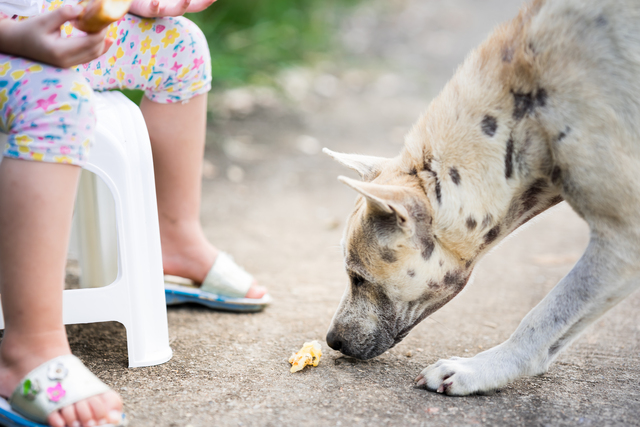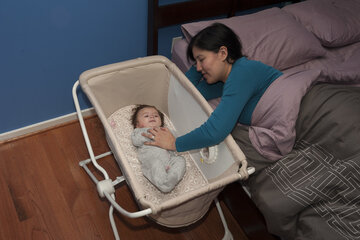
Wondering if dogs can eat baby food? Discover which types are safe, the benefits of using baby food for your dog, and the precautions to take. Baby food can be a temporary solution for dogs that are sick, recovering, or have a reduced appetite.
It’s easy to digest and can help entice picky eaters or dogs that need encouragement to eat. However, not all baby foods are safe for dogs, so it’s important to choose wisely. Visit out post
Look for baby food made from simple ingredients, such as plain meat, vegetables, or fruits, without added salts, sugars, or preservatives.
Avoid baby food containing harmful ingredients like onion, garlic, or other spices that can be toxic to dogs. Certain foods, such as grapes or chocolate, are unsafe and should never be given to pets.
Baby food can also be helpful when administering medicine, as its soft texture can mask pills and make medication easier to give. However, it’s crucial to remember that baby food is not nutritionally complete for dogs
and should not replace their regular diet. Always consult your veterinarian before introducing baby food to your pet, especially if they have allergies or health concerns.
Can Dogs Eat Baby Food?
Yes, dogs can eat baby food, but with some important considerations. Baby food, especially stage 1 or stage 2 purees, can be a temporary option for dogs that are sick, have difficulty eating, or are recovering from surgery.
These foods are easy to digest and can help entice a dog with a reduced appetite. However, not all baby food is safe for dogs.
What to Look for in Safe Baby Food:
Simple Ingredients: Opt for baby food that contains only meat, vegetables, or fruits without added salts, sugars, or preservatives.
No Harmful Additives: Avoid baby foods containing onion, garlic, or any spices, as these can be toxic to dogs.
Check for Allergens: Some dogs might have sensitivities or allergies to specific ingredients.
When Is Baby Food Helpful?
For dogs that are unwell or have lost their appetite.
To administer medicine by mixing it with the food.
As a treat, in moderation.
Precautions to Keep in Mind:
Baby food should not replace a balanced dog diet long-term. It lacks essential nutrients your dog needs.
Always consult your veterinarian before introducing baby food to your dog, especially if your pet has underlying health issues.
Can Dogs Eat Baby Food with Bananas?
Yes, dogs can eat baby food made with bananas, but there are some considerations to ensure their safety. Bananas are a healthy option for dogs, providing essential nutrients such as potassium, vitamins C and B6, and fiber.
These nutrients can support muscle function, immunity, and digestion. Baby food with bananas can be particularly helpful for dogs that are sick, recovering, or have a reduced appetite, as its smooth texture is easy to eat and digest.
However, it’s important to choose the right type of baby food. Always check the label to ensure there are no added sugars, artificial sweeteners,
or harmful additives like xylitol, which is toxic to dogs. Opt for baby food that contains plain bananas or minimal, dog-safe ingredients.
While bananas are healthy, they are naturally high in sugar, so serving small portions is best. You can use banana baby food as an occasional treat, a way to encourage a picky eater or to help administer medication.
If your dog has any health concerns, it’s a good idea to consult your veterinarian before introducing baby food to their diet.
This ensures it’s safe and appropriate for your pet’s specific needs. Banana baby food can be a tasty and safe option for dogs when chosen carefully and given in moderation.
Can Dogs Eat Baby Food Vegetables?
Yes, dogs can eat baby food made with vegetables, but it’s important to be careful with the ingredients. Vegetables like carrots, peas, sweet potatoes, and green beans are generally safe and can provide nutritional benefits for dogs.
Baby food containing these vegetables can be a helpful option, particularly for dogs that need soft, easy-to-digest food, such as those recovering from illness or surgery.
What to Look for in Safe Baby Food Vegetables
When feeding your dog baby food vegetables, always check the label for harmful additives. Avoid products with added salt, sugar, preservatives, or flavorings.
Most importantly, ensure that the baby food does not contain any toxic vegetables, such as onions or garlic, which are harmful to dogs. Stick to simple vegetable blends that contain only dog-safe ingredients.
Moderation is Key
While baby food vegetables can be a healthy supplement, they should be served in moderation. Baby food is not nutritionally complete for dogs, so it should not replace their regular diet. Instead, use it as an occasional treat or as a way to entice a sick or picky eater.
Consult Your Veterinarian
Before introducing baby food to your dog, it’s always a good idea to consult with your veterinarian, especially if your dog has health concerns or dietary restrictions.
Your vet can guide you in choosing the right type of baby food for your dog’s specific needs.
Can Dogs Eat Pumpkin Baby Food?
Yes, dogs can eat pumpkin baby food, and it can be a healthy addition to their diet in moderation. Pumpkin is rich in fiber, vitamins A and C, and antioxidants, all of which can benefit your dog’s health.
It’s often used to help with digestive issues, such as constipation or diarrhea, and can also support urinary health and weight management.
What to Look for in Safe Pumpkin Baby Food
When choosing pumpkin baby food for your dog, ensure it’s plain pumpkin without added sugar, salt, or spices. Some baby food brands may include ingredients like cinnamon, nutmeg, or other flavorings that could be harmful to dogs.
Always check the label to ensure it contains just pure pumpkin and no added preservatives or artificial ingredients.
Benefits of Pumpkin Can Dogs Eat Baby Food
Low in Calories: Pumpkin is low in calories, making it a good option for dogs that need to lose weight or maintain a healthy weight.
Vitamins and Antioxidants: It provides essential vitamins and antioxidants that support overall health.
Moderation and Consultation
While pumpkin baby food is safe for dogs, it should be served in moderation. Too much pumpkin can lead to digestive upset, so it’s important to start with small amounts and monitor your dog’s reaction.
If you’re unsure whether pumpkin baby food is right for your dog, it’s always a good idea to consult with your veterinarian, especially if your dog has any health concerns.
Dog Won’t Eat: What Can I Do?

If your dog is refusing to eat, it can be worrying, but there are several things you can try to help encourage them to eat again.
Loss of appetite in dogs can occur for many reasons, including health problems, stress, or simply being a picky eater. Here’s a guide on what to do if your dog won’t eat:
Check for Health Issues
A sudden refusal to eat may indicate an underlying health issue. Dogs can stop eating due to conditions like dental pain, gastrointestinal upset, infections, or more serious health concerns.
If your dog is refusing food for more than 24 hours or shows other signs of illness (like vomiting, diarrhea, or lethargy), consult a veterinarian to rule out any medical problems.
Make Food More Appealing
If your dog is being a picky eater, try making their food more enticing:
Warm the Food: Slightly warming up your dog’s food can enhance the aroma, making it more appealing.
Add Toppings: Mixing in small amounts of wet food, low-sodium broth, or cooked meats like chicken or beef can make the food tastier.
Try Different Flavors: If your dog is bored with their current food, try introducing a new flavor or texture to keep things interesting.
A sudden refusal to eat may indicate an underlying health issue. Dogs can stop eating due to conditions like dental pain, gastrointestinal upset, infections, or more serious health concerns.
If your dog is refusing food for more than 24 hours or shows other signs of illness (like vomiting, diarrhea, or lethargy), consult a veterinarian to rule out any medical problems.
If your dog is being a picky eater, try making their food more enticing. Slightly warming up your dog’s food can enhance the aroma, making it more appealing.
Mixing in small amounts of wet food, low-sodium broth, or cooked meats like chicken or beef can also make the food tastier. If your dog is bored with their current food, try introducing a new flavor or texture to keep things interesting.
Dogs thrive on routine. To encourage eating, try to feed your dog at the same time each day. Leave the food out for 15-30 minutes;
if your dog doesn’t eat during this time, remove the food and try again later. This helps your dog learn that mealtime is consistent and not optional.
Stress or changes in your dog’s environment can cause a loss of appetite. New people, loud noises, or changes in their daily routine may be contributing factors. Ensure your dog has a calm, quiet space to eat without distractions.
What kinds of baby food can my dog eat?
When considering baby food for your dog, it’s essential to choose varieties that are safe and healthy for them. Here are some types of baby food that your dog can eat in moderation:
Plain Meat Baby Food
Pureed meats like chicken, turkey, or beef (without added seasonings or spices) are often safe for dogs. They can provide a good source of protein, especially for dogs with reduced appetites or who need help recovering from an illness or surgery.
Always make sure there are no added salts, preservatives, or artificial ingredients.
Vegetable Baby Food
Simple vegetable-based baby foods, such as pureed carrots, peas, or sweet potatoes, can be a safe option for dogs. These vegetables are packed with vitamins and fiber,
which can help with digestion. Avoid baby foods with added sugar, salt, or spices like garlic and onion, which are toxic to dogs.
Rice or Oatmeal Baby Food
Plain rice or oatmeal baby food can be a good option for dogs with digestive issues. It’s easy on the stomach and can help soothe mild stomach upset. Just be sure it doesn’t contain added sugars or flavorings.
Important Notes:
Avoid Harmful Ingredients: Never feed your dog baby food that contains garlic, onion, artificial sweeteners (like xylitol), or high levels of sugar or salt, as these can be harmful or toxic.
Moderation is Key: Baby food should only be a temporary solution or treat, not a long-term replacement for your dog’s regular balanced diet.
How much baby food is right for my dog?
The amount of baby food that is right for your dog depends on their size, health, and individual needs. Baby food should be considered a supplement or occasional treat,
not a replacement for their regular balanced diet. Here are some general guidelines to help determine the right amount:
Size and Weight of Your Dog
Small Dogs (Under 10 lbs.): A small dog may only need 1–2 tablespoons of baby food per meal. You can mix it with their regular food to make it more appealing.
Medium Dogs (10–30 lbs.): Medium-sized dogs may have around 2–4 tablespoons of baby food. Again, it’s best to mix it with their regular meals to ensure they’re still getting a balanced diet.
Large Dogs (30+ lbs.): Large dogs can have around 4–6 tablespoons, but this amount can vary depending on the specific baby food and your dog’s activity level and health.
Health and Medical Conditions
If your dog has any health conditions, like digestive issues, a loss of appetite, or recovery from surgery, baby food can be helpful, but it should be given in smaller amounts and only temporarily.
For example, if your dog is sick and not eating, baby food can be used as an easy-to-digest option. However, be cautious of overfeeding and consult your veterinarian for recommendations.
Treat or Supplement
Baby food should not replace your dog’s regular, nutritionally balanced food. It can be given occasionally to stimulate appetite or as a treat, but not as a daily meal.
Always ensure that the majority of your dog’s diet is made up of high-quality dog food formulated to meet their nutritional needs.
Monitor for Changes
If you’re introducing baby food to your dog’s diet, start with small amounts and monitor for any digestive changes, such as upset stomach or diarrhea. If your dog shows any adverse reactions, discontinue the baby food and consult your vet.
What should I do after I give my dog baby food?

After giving your dog baby food, it’s important to observe their response and follow a few steps to ensure they’re safe and comfortable. Here’s what you should do:
Monitor for Any Adverse Reactions
After introducing baby food, keep a close eye on your dog for any signs of discomfort or adverse reactions, such as:
Upset stomach (vomiting or diarrhea)
Allergic reactions (itching, swelling, or hives)
Lethargy or changes in behavior
If any of these symptoms occur, stop feeding the baby food immediately and consult your veterinarian.
Observe Their Eating and Drinking Habits
Ensure that your dog eats and drinks regularly after receiving baby food. Sometimes, dogs might refuse food or water even after trying baby food.
If your dog is not drinking water or shows no interest in food for more than 24 hours, it’s important to contact your vet, as this could indicate an underlying health issue.
Stick to Portion Control
Even though baby food may be a tempting treat, it should not replace your dog’s regular balanced diet. Make sure that the baby food is only offered in moderation,
as a supplement, or occasional treat. Too much baby food, especially if it’s not nutritionally complete for dogs, can lead to imbalances or digestive upset.
Revert to a Regular Diet After a Short Time
Baby food is best used temporarily, especially if your dog is sick or recovering from surgery. Once your dog is feeling better or their appetite returns to normal, transition back to their regular dog food.
If baby food is used to entice a picky eater, continue offering their usual meals alongside the baby food until they’re back to eating regularly.
Consult Your Veterinarian
If your dog continues to show a lack of appetite or has trouble digesting baby food, it’s always a good idea to reach out to your vet.
They can help determine if baby food is an appropriate addition to your dog’s diet and whether there’s an underlying issue that needs attention.
By monitoring your dog after giving them baby food and ensuring it remains a small, occasional treat, you can help support their health and well-being while ensuring they continue to get the proper nutrition.


Leave a Comment